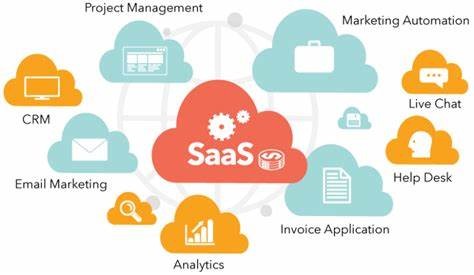My 6-Step Strategy Blueprint to Decide Which Digital Tool Is Right for Client’s Business Growth

Introduction
Every business has its own set of needs, wants, and desires, but there is one thing that is certain – it requires certain tools in order to grow. The digital tools market is a thriving industry, with new tools being released all the time. There are some crucial questions that all businesses should ask themselves before deciding on which digital tools will be most important for their company. These get covered in my 6-step blueprint outlined in this article.
1. Define your goals
There are many digital tools out there that can help companies scale their business and reach new customers.
Before you invest time and money into a new digital tool, it is important to define your goals.
Defining your goals can be a challenge, but if you can do it, you’ll have a better chance of finding a better tool for your business. For example, if your business is in the technology industry, you might want to invest in the latest and greatest digital tool. If your client’s business is in the medical field, you might want to invest in a tool that has more in-depth reporting and data. There is no one-size-fits-all answer to this question. The answer depends on your business and what you want to achieve.
2. Determine your project’s timeline
When working with a digital tool, it is important to know its time commitment. Some digital tools are faster than others. You might find a tool that is an hour faster than the others, but how does that fit into your timeline?
Make sure that you start the project with the appropriate time commitment.
For example, if you want to start an online marketing campaign, you should think about how many hours you want it to last. As soon as you think about how many hours you want your campaign to last, you can determine what type of digital tool you need. You might need a tool that has a shorter time commitment. You will also want to consider the timeline of how often you need to update the tool. If you need to update the tool more often, you might need a tool that is more in-depth.
3. Determine your project’s budget
When planning for a digital transformation project, it is important to first determine what your project’s budget looks like.
The budget helps you determine what your digital adoption strategy will look like, and how the project will affect your bottom line.
The first step is to estimate the total cost. This can be done through a rate sheet with breakdown of costs for each specific goal and project component. This will help you to determine what your client is willing to spend on the project.
4. Identify and evaluate the tools that can be applied to your business
It’s important to identify the tools that can be applied to your business before you start using them.
You don’t want to waste your time and money on a tool that doesn’t suit your business use case.
If you’re selling a physical product, you may need to go down the road of hiring a digital marketing consultant to help you out. However, if you’re simply trying to build your business, then you can use digital tools on your own. There are many ways to identify and evaluate the tools that you can use to help your business grow. You can use Google, LinkedIn, and other platforms to find the best digital tools for your business. You can also use a tool like Buzz Sumo to get a bird’s eye view of what marketing tools are being used by the top companies in your industry.
5. Compare the tools
To determine which tool is right for your business, you can start by comparing the different tools. As you look at each tool, you should be asking yourself questions.
Questions like “What is the tool’s target audience?”, “What is the tool’s main purpose?”, “What is the tool’s niche?” and “What are the main features?” are all things to consider before you decide which tool is the best.
Next, you should go out and ask around. Talk to your colleagues and ask them what they think of the tool. They might have a personal experience with the tool, and they might be able to help you decide which tool it is best for your business. After you have done all of these things, you should be able to decide which tool is best for your business.
6. Decide the right tool for your project
When making the final decision, it is important to understand that there is no one tool that is perfect for all businesses. You will need to decide what your business needs and how the tool will help you and your team.
Consider the following factors when making your decision:
1. How much does it cost?
2. What’s the onboarding process like?
3. How many people are using it?
4. What’s the company/business model?
5. What’s the customer feedback like?
If you have a lot of experience with the different tools, you can compare the tools based on their ease of use. If you are new to the digital marketing world, you can compare the tools by taking a look at their onboarding process and other factors that may be helpful to you.
In conclusion, these six steps are a blueprint for success when choosing the right digital tool for client’s business growth. By taking the time to understand the client’s needs and wants, as well as their business goals, I can create a custom solution that will help them reach their full potential. With the right tool in place, they can grow their business while keeping costs down and ensuring a positive return on investment.
🎯I can help you design and implement a digital transformation strategy to reduce costs, save time, and improve efficiency by automating business processes and deploying AI capabilities.
If you are looking to become more efficient and profitable with technology, let’s talk Mugdha – Discovery Session for Digital Transformation | TidyCal
How To Get Refund if Your Digital Tool Fails You
Digital Tools How To Get Refund if Your Digital Tool Fails You Introduction How to Get a Refund With Online...
SaaS: The Future of Productivity for Small Businesses?
Digital Tools SaaS: The Future of Productivity for Small Businesses? Introduction Software-as-a-service, i.e. hashtag#saas tools for small businesses are changing...
The Best Time Tracking Software for Solopreneurs & Small Business Owners
Digital Tools The Best Time Tracking Software for Solopreneurs & Small Business Owners Get the Most Out of Your Time...



2 Responses